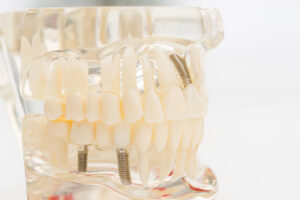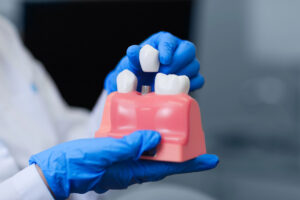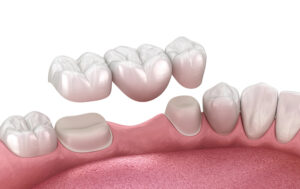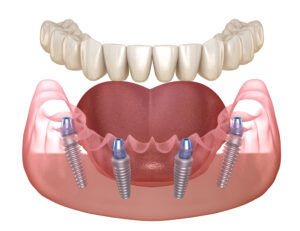
For many, the thought of a dental appointment evokes an uneasy feeling—a tightening in the chest, a dry mouth, and a heightened awareness of the sterile smell of the clinic. This is not mere apprehension; it’s a deeply ingrained reaction to past experiences, often tied to discomfort, vulnerability, or even pain. These moments become triggers patient fear—powerful emotional cues that deter people from seeking the oral care they need. Over time, this avoidance can lead to compounding dental problems, from untreated cavities to advanced gum disease.
Enter sleep dentistry—a modern approach that doesn’t just numb the pain but transforms the entire patient experience. By helping people undergo treatment while deeply relaxed or fully sedated, sleep dentistry removes both the physical and psychological barriers that keep so many away from the dental chair. This isn’t just about comfort in the moment; it’s about fostering a lifetime of trust and proactive care.
Sleep Dentistry as a Reset Button
Sleep dentistry intervenes in this cycle by offering patients a way to experience dental care without the distress they’ve come to expect. Depending on the patient’s needs and the complexity of the procedure, sedation can range from mild (oral medication to induce relaxation) to deep (intravenous sedation or general anesthesia).
This approach does more than keep a patient calm—it gives their nervous system a break. While sedated, the brain isn’t forming new fearful memories associated with the procedure. Instead, the body remains still, the mind is relaxed, and the dental team can work efficiently, often completing multiple procedures in a single visit.
For patients, waking up to find their treatment completed without the stress or discomfort they anticipated is a profound psychological shift. Many describe it as a “reset button” for their relationship with dentistry, replacing fear with relief and even gratitude.
The Long-Term Benefits of a Calmer Approach
When a patient learns they can undergo treatment without trauma, they’re far more likely to keep up with preventive care. This is the true power of sleep dentistry—it transforms a single positive visit into a sustained habit of oral health maintenance.
- Reduced avoidance: Patients no longer delay care until problems escalate.
- Comprehensive treatment: Complex cases, such as multiple crowns or extractions, can be handled in fewer appointments.
- Improved outcomes: Less time between visits means early detection of issues, leading to better long-term oral health.
- Better patient-dentist relationships: Trust builds naturally when patients associate visits with calm, comfortable experiences.
Over time, these benefits compound. A patient who once visited only in emergencies can transition into someone who books regular cleanings, invests in preventive treatments, and feels empowered in their oral health journey.
Understanding and Addressing Triggers Patient Fear
One of the most profound aspects of sleep dentistry is its ability to bypass the sensory and emotional triggers that cause anxiety in the first place. Common triggers include:
- The sound of dental drills.
- The smell of antiseptic solutions.
- The feeling of instruments in the mouth.
- Fear of needles or pain.
- A sense of loss of control while reclined in the chair.
Because sedation minimizes awareness of these sensations, patients avoid reactivating their fear pathways. Over time, repeated positive experiences under sedation can even help desensitize those triggers, allowing some patients to eventually tolerate non-sedated visits for minor treatments.
The Emotional Weight of Dental Fear
Dental fear often has roots that stretch back to childhood—an unexpectedly painful filling, an insensitive dentist, or simply the overwhelming sensory environment of a clinic. These early impressions become powerful triggers, stored in the subconscious. Each time a person even thinks of booking an appointment, those triggers patient fear.
What’s striking is that dental anxiety doesn’t discriminate. It affects young adults as much as seniors, professionals as much as retirees. It also doesn’t always manifest as overt panic. For some, it’s a quiet, passive avoidance—the subtle choice to delay check-ups “until next month,” which becomes next year, and then five years.
Unfortunately, the longer patients delay, the more complex—and often invasive—the required treatment becomes. This only reinforces the cycle of fear, making the next visit seem even more daunting.
More Than Just Comfort—A Commitment to Care
Critics sometimes view sedation dentistry as a luxury service, but its value goes far beyond comfort. For individuals with severe dental anxiety, strong gag reflexes, special needs, or medical conditions that make long procedures difficult, sleep dentistry is a necessity. It’s a bridge to care that might otherwise be inaccessible.
This approach also has public health implications. When more people are willing to seek care, the overall incidence of advanced decay, oral infections, and tooth loss can decrease. Better oral health contributes to better systemic health, as gum disease and untreated dental infections are linked to heart disease, diabetes, and other chronic conditions.
A Gentle Journey Forward
Ultimately, sleep dentistry isn’t about avoiding the reality of dental treatment—it’s about reframing it. It’s about replacing a history of fear with a future of possibility. Patients who once associated dentistry with tension and pain can begin to view it as a place of relief, transformation, and self-care.
A gentle journey begins when fear is acknowledged, respected, and addressed with compassion. Through sleep dentistry, countless people are finding their way back to the dental chair, not as reluctant visitors but as active participants in their lifelong oral health.
In a world where anxiety often dictates health decisions, sleep dentistry stands as a quiet but powerful advocate for change—proving that the path to a healthy smile doesn’t have to be a painful one. Instead, it can be a calm, restorative journey that starts with a single, fear-free step.







